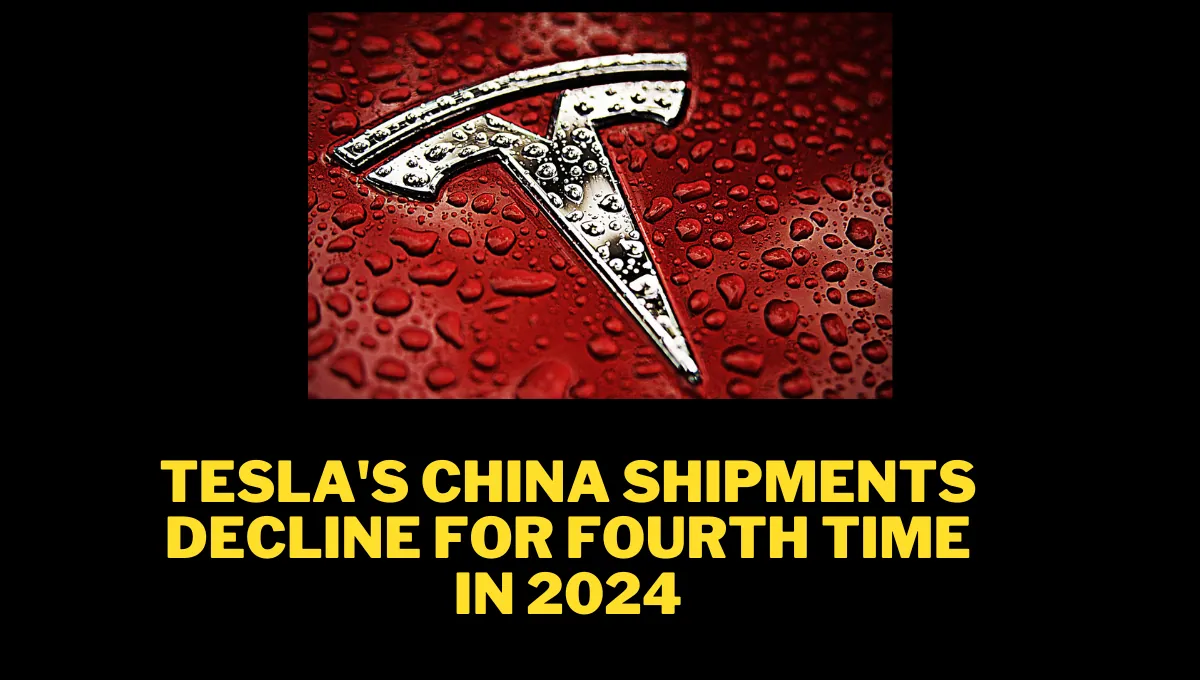Tesla Inc. is facing significant challenges in China, with a notable decline in shipments from its Shanghai factory.
This marks the fourth decline in output for Tesla this year, reflecting the intense price competition and evolving market dynamics in the world’s largest electric vehicle (EV) market.
Tesla’s Shipment Decline in China
Year-on-Year Shipment Drop
In June 2024, Tesla experienced a substantial 24.2% year-on-year decline in shipments from its Shanghai facility.
This decrease highlights the ongoing challenges Tesla is facing in maintaining its production and sales momentum in China amid a fiercely competitive market.
Monthly Shipment Figures
Deliveries of Tesla’s popular Model 3 and Model Y vehicles fell to 71,007 units in June, according to calculations based on preliminary data from the China Passenger Car Association (PCA).
This represents a 2.2% decline from May’s shipment figures, indicating a consistent downward trend in Tesla’s China deliveries.
Broader Market Context
Impact on Global Production and Delivery
The decline in shipments from China comes at a critical time for Tesla, as the company is set to release its global second-quarter production and delivery figures.
Analysts are projecting that Tesla will deliver 439,302 EVs in the second quarter, which would represent a 5.8% decrease from the same period last year.
This would also mark the second consecutive quarter of declining deliveries, underscoring the mounting pressure on Elon Musk’s company.
Slowing EV Sales Growth
The reduction in Tesla’s output in China is reflective of a broader slowdown in EV sales growth globally.
As the market matures and competition intensifies, maintaining high growth rates becomes increasingly challenging. This trend is evident not only in Tesla’s performance but also in the broader EV market.
China’s New-Energy Vehicle Market
Rise in New-Energy Vehicle Sales
Despite Tesla’s shipment decline, the overall new-energy vehicle market in China remains robust.
Preliminary PCA data indicates that new-energy vehicle sales in China are expected to rise by 28% in June 2024 compared to June 2023.
This growth is partly driven by subsidies introduced in April for trade-in vehicles, which have gradually taken effect.
Total Shipments of New-Energy Cars
The total shipments of new-energy vehicles in China are projected to reach 970,000 units in June, marking an 8% increase from the previous month.
This growth highlights the continued strong demand for new energy vehicles in China, even as individual companies like Tesla face specific challenges.
Factors Contributing to Tesla’s Decline
Price War in China
One of the significant factors contributing to Tesla’s shipment decline in China is the ongoing price war. With numerous competitors vying for market share, aggressive pricing strategies have become common.
This has put pressure on Tesla to adjust its prices and offerings to remain competitive, impacting its overall shipment volumes.
Market Saturation and Consumer Preferences
The Chinese EV market is becoming increasingly saturated, with many local and international players offering a wide range of options to consumers.
As a result, consumer preferences are evolving, with buyers seeking not only competitive pricing but also advanced features and superior customer service.
Tesla must continuously innovate and adapt to these changing preferences to sustain its market position.
Implications for Tesla
Global Strategy Adjustments
The decline in shipments from China necessitates a reevaluation of Tesla’s global strategy. As China plays a crucial role in Tesla’s overall sales and production, the company must find ways to address the challenges in this key market.
This could involve further localizing production, enhancing customer engagement, and introducing new models tailored to Chinese consumers.
Focus on Innovation and Quality
To counteract the competitive pressures in China, Tesla needs to emphasize its strengths in innovation and quality.
By continuing to lead in technological advancements and maintaining high standards of product quality, Tesla can differentiate itself from competitors and attract discerning buyers.
Diversification of Markets
While China remains a vital market for Tesla, diversifying its market presence globally can help mitigate the risks associated with regional fluctuations.
Expanding into emerging markets and strengthening its foothold in established ones can provide Tesla with a more balanced and resilient sales portfolio.
Conclusion
Tesla’s fourth consecutive decline in shipments from its Shanghai factory in 2024 highlights the challenges the company faces in the highly competitive and dynamic Chinese EV market.
Despite these setbacks, the broader new-energy vehicle market in China continues to grow, driven by government subsidies and strong consumer demand.
To navigate these challenges, Tesla must adapt its strategies, focusing on innovation, quality, and customer engagement.
By addressing the specific needs of the Chinese market and diversifying its global presence, Tesla can overcome the current hurdles and continue to be a leader in the EV industry.
